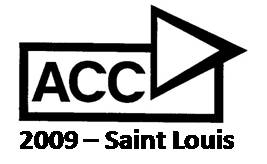Special Sessions on Emerging Topics
Title: Simulation of Atomic Force Microscope with applications to image analysis and control design
Organizer and Chair: Sergey Belikov, Marena Systems Corporation
Co-Chair: Sergei Magonov, Agilent Technologies
Presentations:
Atomic Force Microscope Simulator Under the Hood: Models and Algorithms based on Asymptotic Nonlinear Mechanics
Sergey Belikov, Marena Systems Corporation
Exploring Atomic Force Microscopy with the Computer Simulator
Sergei Magonov, Agilent Technologies
Rapid Iteration of X-Y Stage Control Designs for Atomic Force Microscopes Through Tightly Integrated Measurements and Simulations
Daniel Abramovitch, Agilent Laboratories
An Open Software and Hardware Platform for Simulation and High-Speed,
Hierarchical Control
Jeannie Sullivan Falcon, National Instruments
Time: Wednesday June 10, 2009; 6:15 – 7:45pm
Location: Mills Studio 6
Abstract: Control of experiment is essential part of Atomic Force Microscopy (AFM). AFM is the technique in which is a minute probe is applied for high-resolution profiling of samples and studies of their mechanical and electric properties at the nanometer scale. The importance of this technique is increasing with miniaturization of functional industrial components and related need in comprehensive material characterization at small dimensions. In recent years control systems community expressed significant interest to AFM (several invited sessions at ACC 2008 and ACC 2009, publications in Control Systems Magazine). Further development of this method, which is related to transition to multi-frequency and broad band measurements and use increasing number of lock-in amplified, is inconceivable with proper advances in design and control of AFM instrumentation and applications. With increasing role of nanotechnology, AFM becomes an important tool in control education and research. However, few control experts have access to expensive AFM instrumentation. AFM Simulator allows control experts to demonstrate applicability of their theories and algorithms to AFM. This will increase the needed flow of ideas from control community to AFM instrument designers and practitioners. Simulator can be also introduced into control curriculums to expand them towards nanotechnology applications.
All this shows the importance of this special session that will attract the control scientists and specialists to this valuable practical field.
